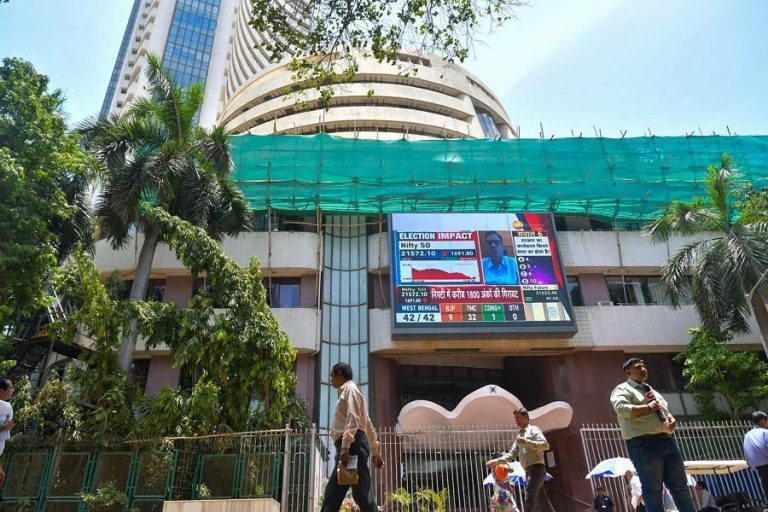
Why has the Nifty index remained flat for an entire year?
As we step into the second half of 2023, the Indian stock market continues to puzzle investors with its flat performance. Despite strong earnings from major firms, the Nifty 50 index has remained nearly unchanged over the past year. This stagnation is a far cry from the exuberance that characterized the previous year, when the index soared to record highs. So, what’s behind this unexpected stagnation?
One of the primary reasons for the Nifty’s flat performance is the weak global cues. Global markets have been facing headwinds, with the US-China trade tensions continuing to simmer. The US Federal Reserve’s (Fed) decision to keep interest rates high has also led to a decline in global investor sentiment. This has resulted in a lack of foreign inflows into the Indian market, which has in turn put pressure on the rupee.
The rupee has slipped to a five-month low, adding to the uncertainty in the market. A weak rupee can lead to higher import costs and inflation, making it challenging for companies to maintain their profit margins. This has led to a cautious approach from investors, who are waiting for clearer cues from the global market before making any significant bets.
Another significant factor contributing to the Nifty’s flat performance is the tariff threats from the US. India’s decision to impose retaliatory tariffs on US goods has led to a tit-for-tat response from the US. This has created an atmosphere of uncertainty, making it difficult for investors to predict the future trajectory of the market.
Despite these challenges, Indian companies have continued to deliver strong earnings. Many major firms have reported robust profit growth, driven by factors such as a pickup in domestic demand, a stable currency, and a favorable interest rate environment. However, these positive earnings have been unable to translate into a significant rally in the market.
So, what’s holding back Indian equities? One possible explanation is the change in investor behavior. In the past, investors were more willing to take on risk and invest in the market, driven by the promise of high returns. However, with the global economic slowdown and the uncertainty surrounding the US-China trade tensions, investors have become more risk-averse.
This shift in investor behavior has led to a decrease in the amount of money flowing into the market. As a result, the market has become more sensitive to any negative news, leading to increased volatility. This volatility has made it challenging for investors to make informed decisions, leading to a lack of participation in the market.
Another factor that could be contributing to the Nifty’s flat performance is the high valuation of the market. The Nifty is currently trading at a price-to-earnings ratio (P/E) of around 20, which is higher than its historical average. This high valuation has made it challenging for investors to justify buying into the market, especially considering the uncertainty surrounding the global economy.
As investors await cues from the US Fed, questions remain on what’s holding back Indian equities. Will the Fed’s decision to keep interest rates high continue to weigh on the market, or will a rate cut provide a boost to the Indian economy? How will the US-China trade tensions impact the Indian market, and what are the implications for Indian companies?
For now, investors will need to remain patient and cautious, waiting for clearer signs of direction from the global market. Despite the challenges, India remains an attractive destination for investors, with a young population, a growing middle class, and a rapidly expanding economy. As the Indian market continues to evolve, investors will need to stay up-to-date on market developments and be prepared to adapt to changing circumstances.
Source: https://youtu.be/B1QNkhvP1w8



